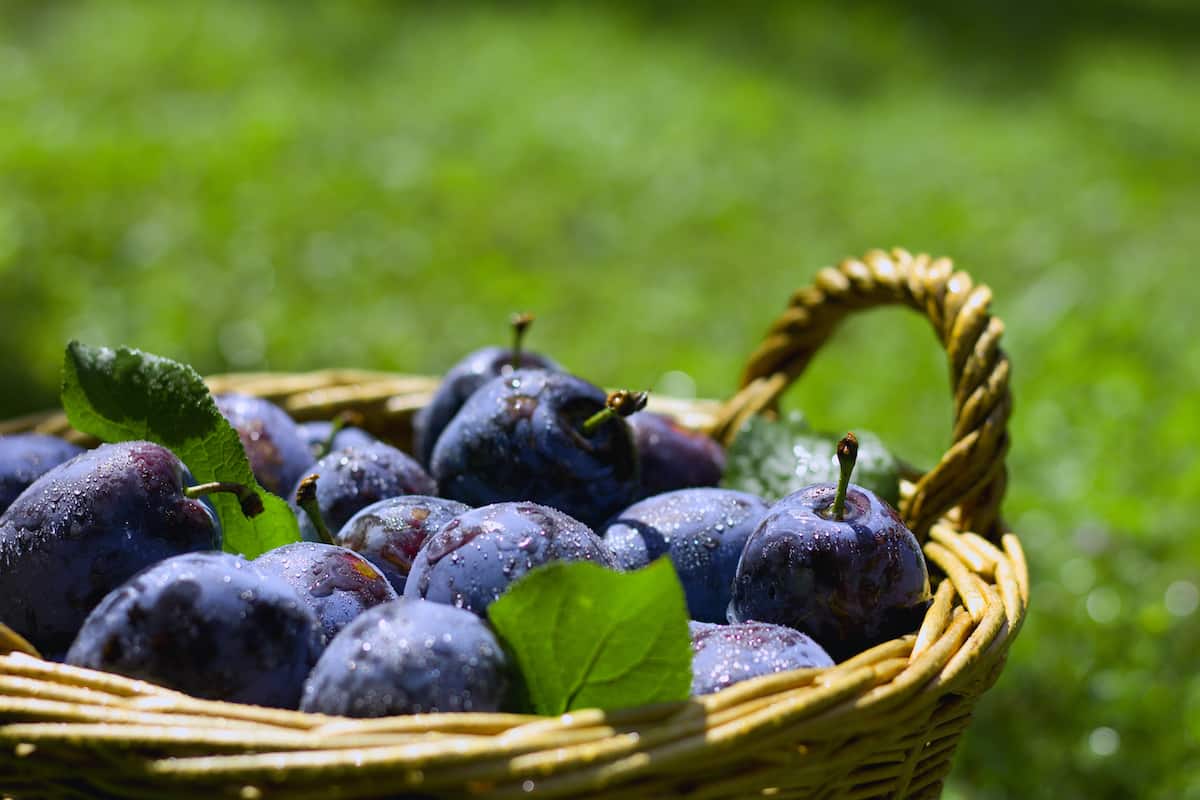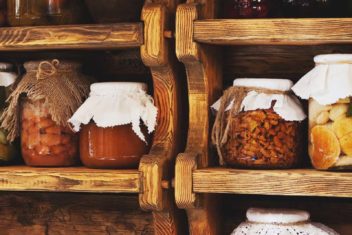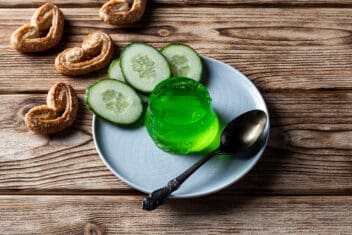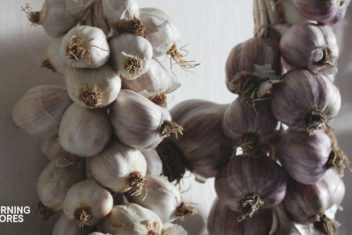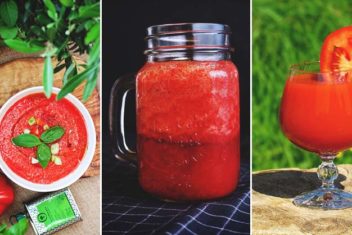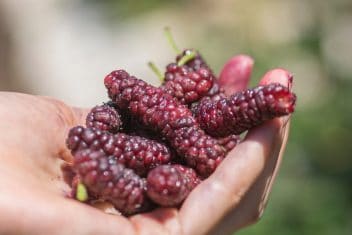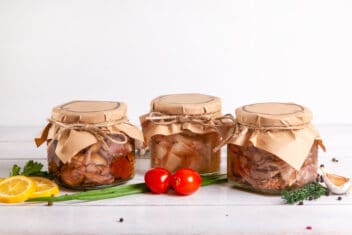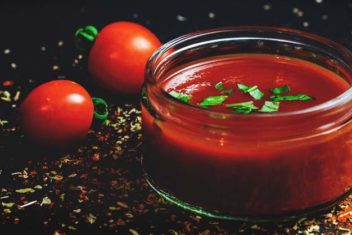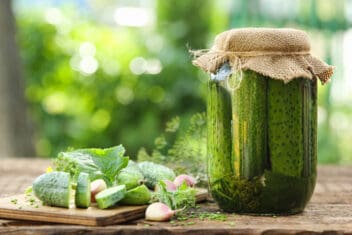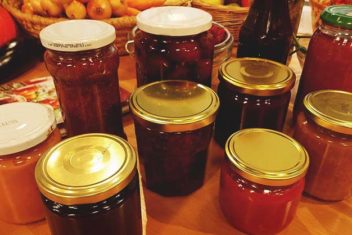It takes a few years before plums and other fruit trees reach full production. But when they do, it can be a bit overwhelming to harvest all that fruit and figure out what to do with it. For example, this year our 6-year-old, standard-sized plum tree produced over 200 pounds of fruit.
There was no way we could eat all of those plums fresh. So, we had to figure out lots of ways to use and preserve them. I came across lots of great ideas in my research that I’ve consolidated into one list to share with all of you plum growers and lovers out there.
Just a warning though, some of these ideas are for serious foodies. Others may be against the law where you live. So, you’ll need to pick and choose which ideas make sense for you. But I hope this list will give you lots of inspiration to help you make the best use of your abundant plum harvests!
Barter Those Excess Plums
Bartering is a common practice among homesteaders and plums are a great barter currency.
1. Barter for Goods
The first way to put your extra plums to good use is to trade them for things you need. For example, you could swap a bushel of plums for a stack of firewood.
2. Barter for Labor
Or, you can barter for free labor. You can offer to let friends or family come to pick plums for themselves in exchange for picking plums for you. I call this the “one for you, one for me” approach. It’s especially enticing for people who don’t have their own plum trees and aren’t completely sick of picking plums already!
3. Barter for Finished Goods
Alternatively, you can pick the plums and give them to someone else to use to make jams or other products. Then in exchange, they give you back some of their finished plum preserves or dishes.
Historical Uses of Plums
As a homesteader, I am always looking back to find out how things were done before grocery stores and refrigerators were the norm. To my surprise, I learned that historically, early fruit growers didn’t eat that much of their fruit.
Mainly that was because they didn’t have the amazingly sweet and tasty cultivars we have today. So, that fruit was easier to enjoy when processed into something else. Here’s what they did with their fruit.
4. Feed Pigs
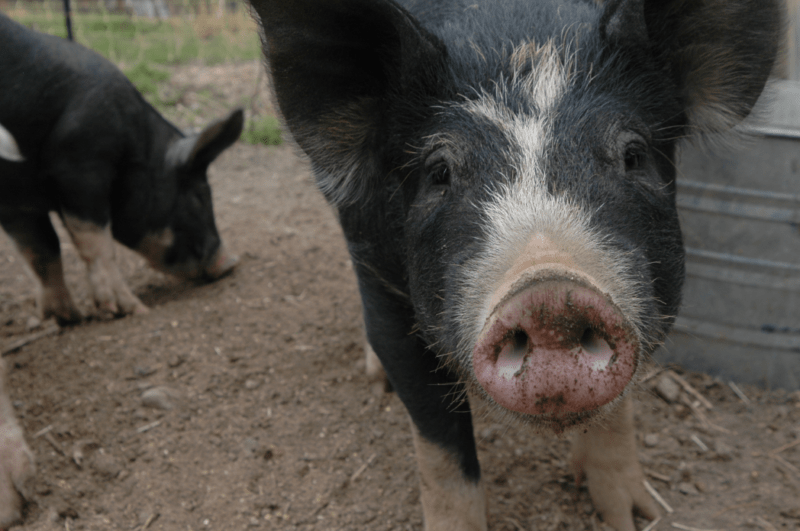
Today, feeding pigs with stone fruit is kind of controversial because we know that the pits contain small amounts of amygdalin that becomes cyanide when digested. However, historically, fruit growers would let their pigs into the orchard areas to glean all the over-ripe plums that dropped to the ground.
I’m sure there were some cases of pig poisoning from excess pit eating. But since pigs often swallow the pits without chewing them, they may not even digest the pits. Also, adult pigs, close to slaughter weight, can eat quite a few over-ripe plums before ingesting lethal levels of cyanide. (Note: Green plums have more potential toxicity than ripe ones.)
If you don’t want to run the risks though, remove the pits or cook the plums with the pit in for a long time until the amygdalin is no longer able to convert to cyanide.
5. Make Brandy

Once upon a time, it was common for people to make their own brandy (without being arrested for moonshining). Plums were fermented whole. The juice was pressed from the meat after fermentation. Then it was distilled into alcohol.
The resulting lovely plum brandy could be drunk all winter long to help take the edge of the winter chill.
6. Make Wine
If you want to make an alcoholic beverage from plums without becoming a moonshiner, plum wine was also an old-time favorite. Grapes were more common for wine since they have higher sugar content.
Yet, if you slightly dry the plums before fermenting, you can increase the sugar content and raise the resulting alcohol level. This also gives plum wine an almost port-like taste. Today you can even use custom yeasts and add sugar to control your alcohol levels.
7. Make Vinegar
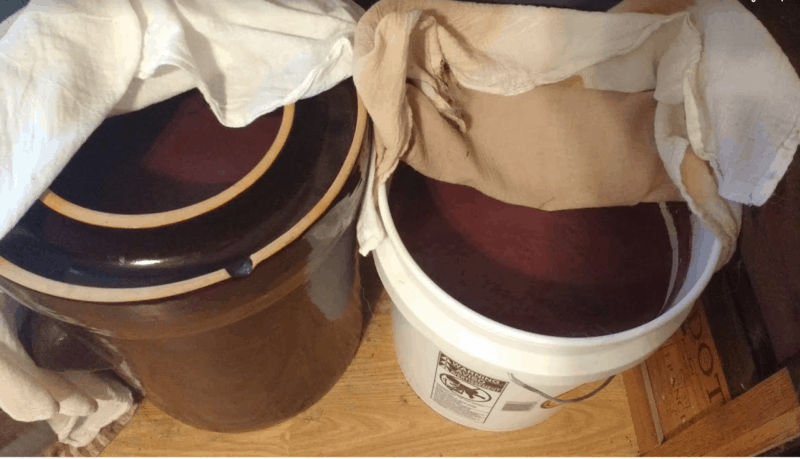
Just in case your plum wine doesn’t end up tasting quite as delicious as you hoped, you can also use that wine to make plum vinegar. Just let the plum wine sit out in a warm location, open to the air for a month or two and it will become vinegar.
If you want to fancy it up a bit, age it in oak for 6-12 months before using. Or, just put some toasted oak chips into your vinegar and remove them after about two weeks. This makes it a bit like a cheap balsamic.
8. Make Prunes
Drying fruits was a very common preservation practice before refrigeration was the norm. Plums, like tomatoes, can be sun or low-heat oven-dried until they are almost leather. You can also use a dehydrator.
They’ll dry faster if you cut them in half and remove the seeds. But you can also dry them whole and remove the pits as you eat them too.
9. Make Plum Butter
Before store-bought pectin and cheap granulated sugar, there was fruit butter. These were basically just fruit cut and cooked until soft and creamy. Plums are fabulous this way.
All you need to do is remove the pit and cook your plums in a heavy-bottomed pan until the plums turn into a thick paste. This is very much like apple butter and tastes wonderful with a little cinnamon or allspice on toast with goat cheese.
Note that old-time plums had a lot of natural acidities. So, they likely just stored that fruit butter in a crock in the root cellar for a few months. Now though, newer plum varieties have been bred to reduce acidity and increase sweetness. As such, put your plum butter in the fridge, freezer, or can it for safety.
Modern Classic Uses for Plums
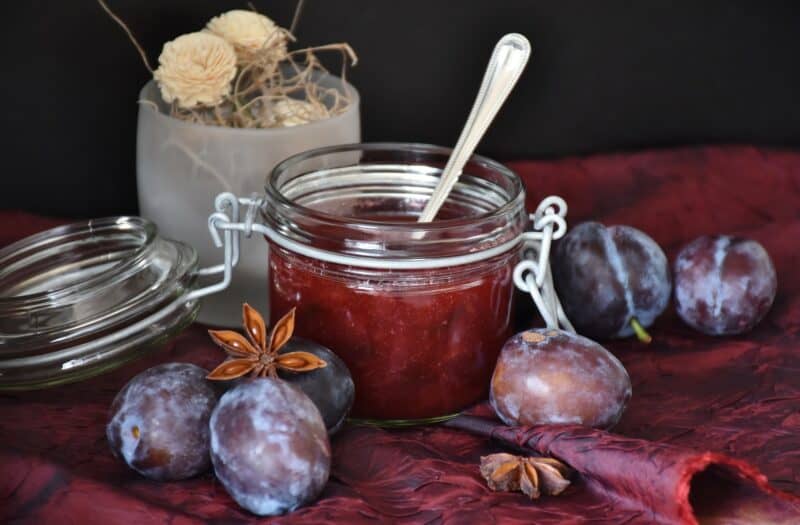
Since about the late 1700s and early 1800s, when processed sugar became a household staple and stovetops were innovated, people also started making lots of fruit preserves. For those of you with a sweet tooth, there are several different preparations of plums you can use on bread.
10. Plum Jam
Jam generally means fruit cooked like fruit butter except that sugar and other ingredients are added. Plum jam is one of the firm favorites ways to preserve plums.
– Sugar Added
Here’s a simple recipe with added sugar. It also breaks up the cooking time into ten-minute increments to minimize the risk of burning or having to stand and stir a hot pot for 40 minutes.
– With Lemon Juice
You can also use lemon juice to increase the acidity in plum jam. This makes water bath canning safer. You need a fair amount of lemon juice for this to be effective. For example, this recipe calls for ½ cup lemon juice to 3 pounds plums.
– Pectin Packed
Some people also add pectin to plum jam to achieve a firmer texture. Plums with their skins on cooked over low heat typically have enough pectin to congeal nicely. Note, however, if you decide to add pectin, you need to use a completely different method of preparation than for pectin-free plum jam.
11. Plum Preserves
Plum preserves are plum jam made with larger pieces of plums left intact. To keep pieces larger, you start with plum halves and only cook on high heat only as long as necessary to activate the pectin and thicken the mix. This is usually about 15 minutes from when the fruit mix begins to boil.
You also want to avoid using lemon which breaks down the fruit more quickly. So, to safely water bath can plum preserves, start with tart varieties of plums.
12. Plum Jelly
Plum jelly usually doesn’t contain fruit. It’s made with fruit juice. So, you’ll want to juice your fruit first. One of the easiest ways to juice plums is to use a stovetop juicer. Also, while you are making jelly, you can also make the next item on our list.
13. Canned Plum Juice
Plum juice preserved in canning jars can be stored for a year or more. It’s a great way to get some extra fiber and antioxidants into your diet without having to chew!
14. Canned Plums
You can also pressure or boiling water can whole or half plums. You can make 7 quarts of canned plums for every 14 pounds of plums.
15. Freeze Plums
If canning seems like too much work, just pit plums and put them in freezer bags. Then put them in the freezer for up to a year. We use our frozen plums to make smoothies all year long.
16. Make Purée
If you remove the pits and run your plum meat through your food processor, you can have your own homemade fruit purée. You can freeze that or use it in dessert recipes right away.
Plum Treats For the Foodies
Now for all you foodies out there looking for something a little bit more frufru to do with plums, here are some options.
17. Paté de Fruit
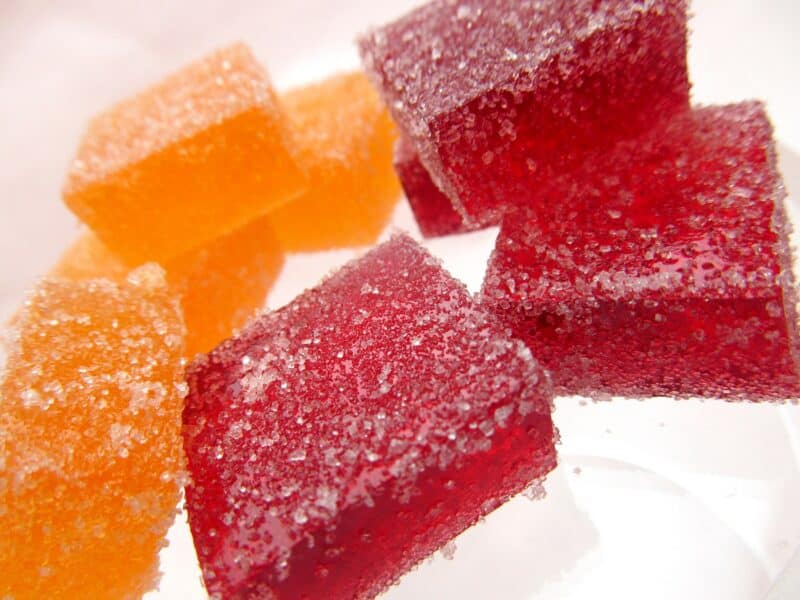
Use that fruit purée you made to make fancy French-style pate de fruit. That stuff costs a fortune at fine patisseries. But it’s pretty easy to make at home and tastes even better with your own fruit.
18. Make Sorbet
I love this super simple David Lebovitz recipe for plum sorbet. But I usually multiply all the ingredients by ten so I have enough for the entire summer.
19. Make Chutney
Chutney is a savory take on preserves. It includes vinegar and lots of spices. I prefer recipes like this one that can be completed in under an hour and have less than 10 ingredients (most of which I grow myself).
Also, if you do make your own plum vinegar this year, make sure to save some to use to make your plum chutney next year.
20. Make Plum Sauce
You can find lots of recipes on the internet for Chinese plum sauce. But I really love this take that includes one of my favorite lesser-used spices Sichuan pepper.
21. Lacto-ferment Plums
Know how to make sauerkraut? Well, then you can also make Lacto-fermented plums.
They tend to have a taste that’s a bit more vinegary than when you ferment vegetables due to their high sugar content. But they make a nice contrast when used along with a spicy plum chutney as a condiment for curry dishes or on flatbreads. You can also use them for meat marinades.
22. Pickle Plums
You can also pickle plums in vinegar just like you would beets or eggs. Once pickled, chop them up and add them to your vinaigrette or mix them with nuts and dried fruits to make a spread to offer on a fancy cheese board.
23. Make Saladitos
I loved those salted plums they sold at the corner convenience store where I grew up in Southern California. They were salty, sour, and sweet at the same time. But they are hard to find where I live now. Thankfully, it’s easy to make your own.
This recipe gives a good overview when you start with prunes. However, when using fresh plums, you can also season and salt your plums before you put them in the dehydrator.
24. Preserve in Vodka
One last way to preserve your plums is in vodka or other kinds of alcohol. Just clean them, pit them, and pack them in a jar. Then cover with the alcohol of your choice. Age for at least two weeks before use.
The plum flavored alcohol can be used in plum punch or other cocktails and the fruit can be used similar to brandied cherries in desserts.
The Pleasure of Plums
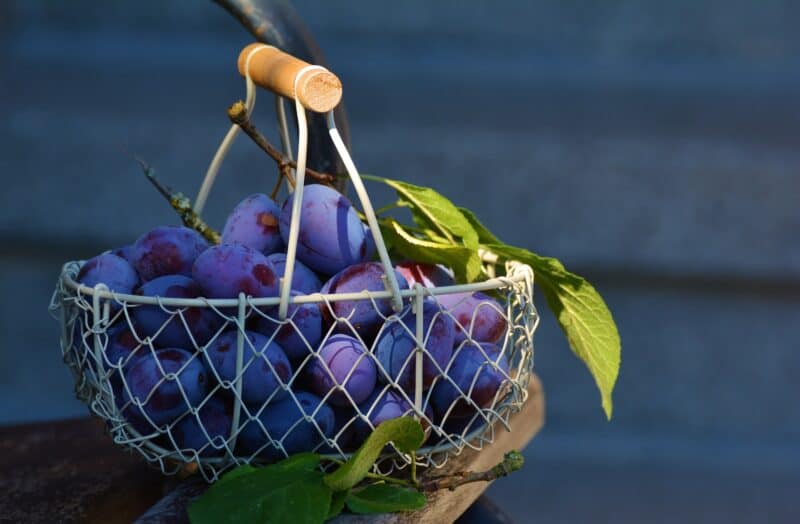
Whether you use and preserve plums as early homesteaders and farmers did, opt for modern classics involving canning and granulated sugar, or transform them into gourmet delicacies, the pleasures of plums can extend far beyond the few weeks they are in season.
Also, don’t forget to thank your trees for their amazing contributions to your culinary enjoyment by mulching and fertilizing as needed to keep them in good health.
